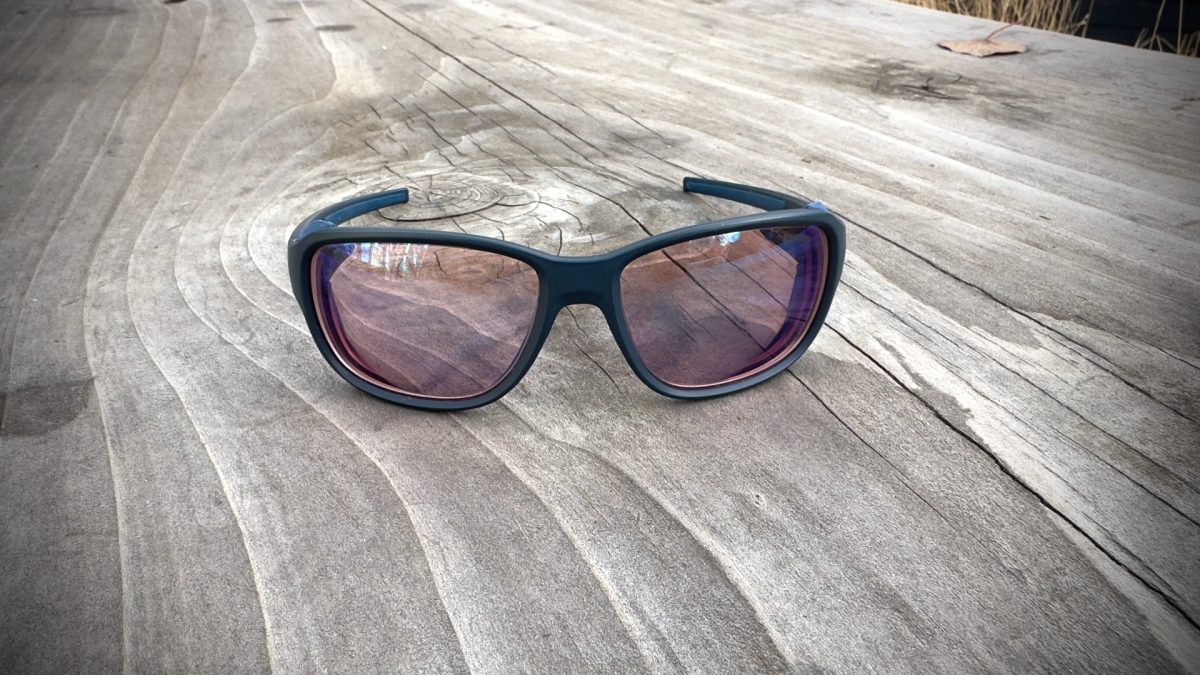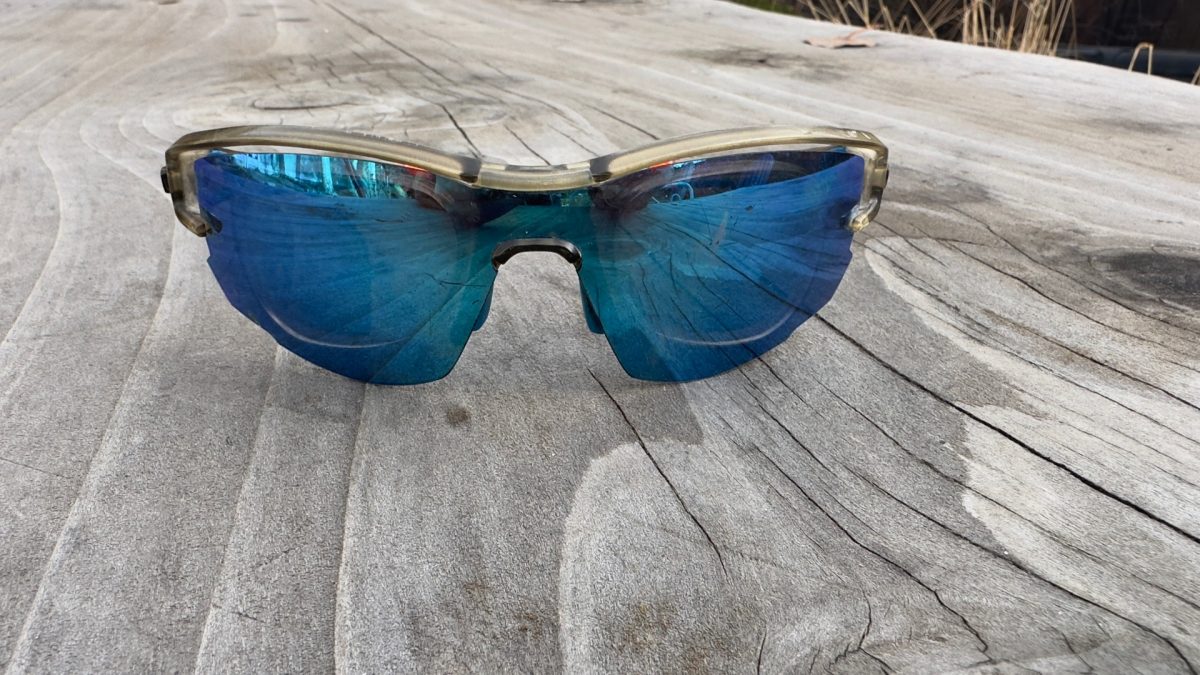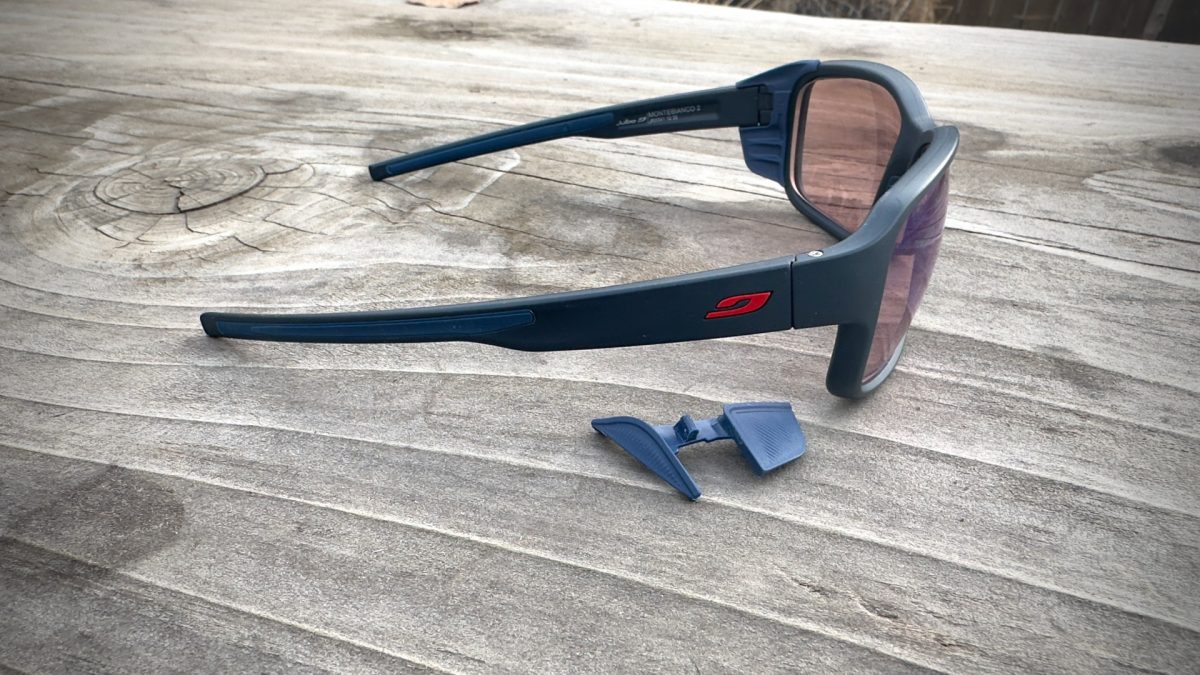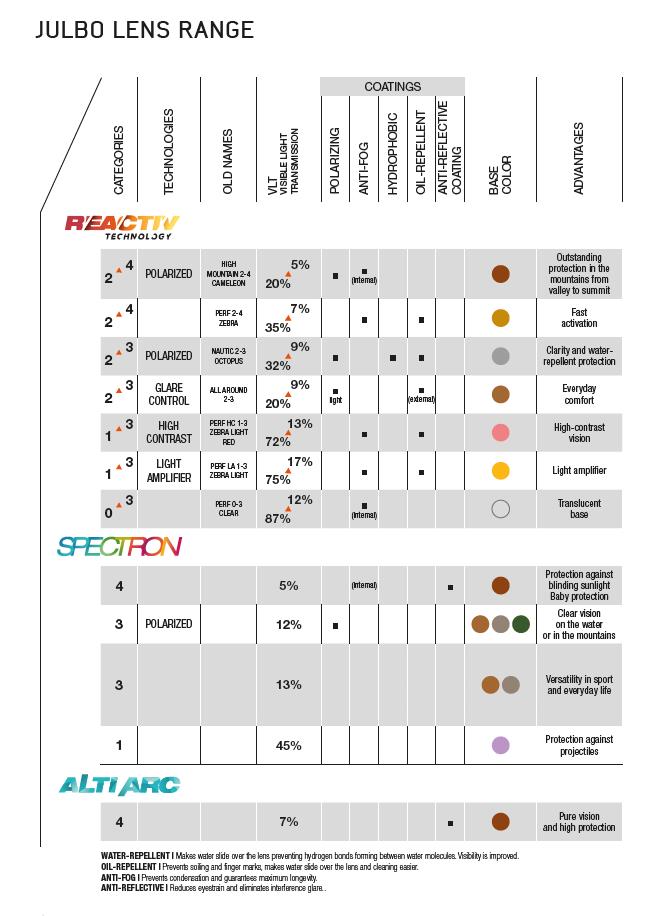The Julbo Montebianco 2 offers great eye protection from intense sun. And fit with the Reactiv 1-3 High Contrast prescription lens; this is eyewear I can use from dawn to dusk.
Julbo is almost a word like Dynafit. Is it “Dee-nah-fit,” or is it “Dye-nah-fit?”
I’m going with the proper pronunciation of Julbo as “Jzewl-bow,” (with a soft Z)…which might be incorrect. No matter what you say: we refer to the French sunglasses company synonymous with high-quality eyewear.
I don’t wear contacts. I tried them out maybe 25 years ago and found them a pain. Over the years, I’ve worn clear-lens prescription glasses and sunglasses. The sunglasses have never been really cheap. A decade or so of prescription Oakleys were financially doable to a generous eyewear stipend through my insurance at the time. Since high-quality prescription sunglasses can be costly, I’d often go at least five years on a single prescription setup. Eyes change over time. So you’re right if you guessed that the lenses were scratched after that timeframe, and the prescription was outdated.
Then you start the cycle over. You purchase a new pair, baby them for a few months, scratch them, and the earth revolves around the sun.
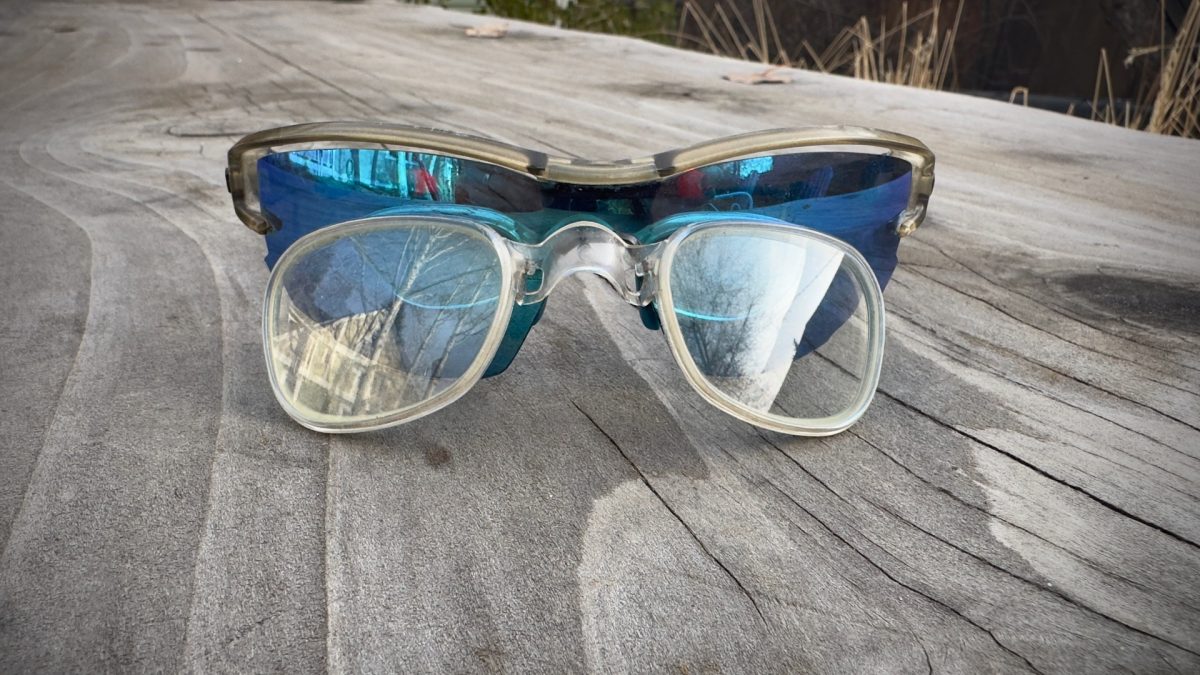
The Julbo insert can be had for roughly $25. You then must pay to have a prescription lens crafted for the insert. The insert prescription costs me about $120, while the frame alone was purchased for $80 (on sale).
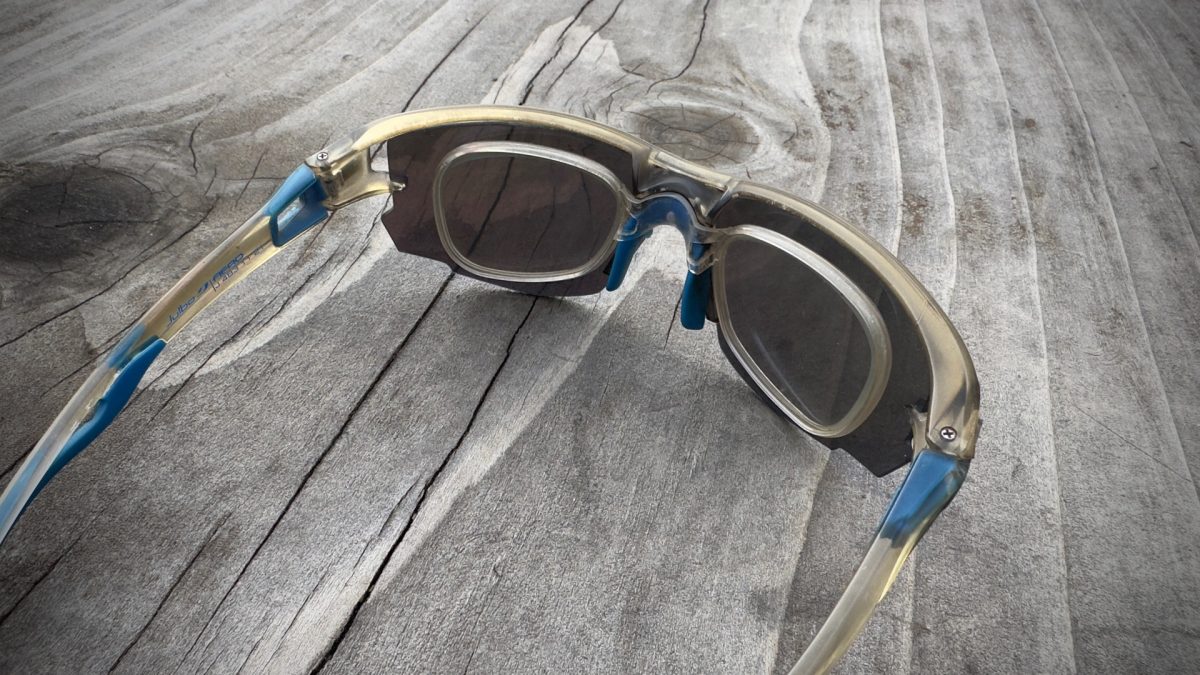
The Julbo prescription insert snaps onto the bridge of the Aerospeed. This was my go to system for nearly five years.
For the past five years, I’ve been using a pair of non-prescription Julbo Aerospeeds with a prescription insert. The insert is easy to pop in and out of the frame. The setup has been great. But as touched upon in a Julbo goggle review highlighting the Reactiv Photochromatic 0-4 lens, I bring clear lens glasses, goggles, and sunglasses on some ski tours.
To streamline, I began experimenting with a Julbo Montebianco 2 frame with prescription Reactiv 1-3 High Contrast lenses. These are photochromatic lenses that darken or lighten depending on the amount of UV exposure. With more UV exposure, they darken. Less UV, less dark. One pair of glasses to rule them all was my goal. Or, for less aspirational goals, I want to carry one pair of glasses on dawn patrol to post-sunset tours.
The general rules of darkening and lightning rates for photochromatic lenses spelled out in the goggle review still apply. Here’s what I wrote:
“Typically, the fade rate is longer than the darkening rate. Further, in cold temperatures, transition lenses become darker but also fade more slowly relative to fade rates in warm temps.
“This is to say that although this may be true, here are some things to consider with this transition lens. If I take the goggle straight from my pack (no sunlight) into bright sun, with temps just below freezing, it’s about a minute + for the lenses to seem fully dark (or as dark as they’ll get) in these conditions. Although that doesn’t seem like a long time, you might disagree.”
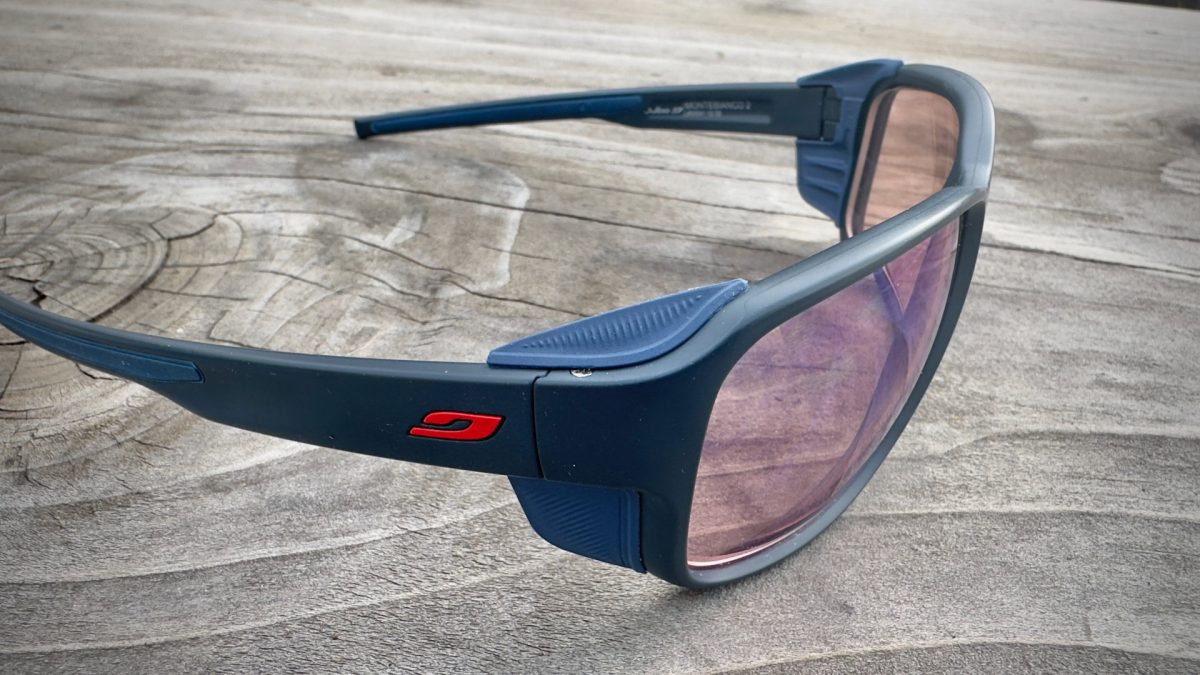
The Montebianco 2 comes with removable plastic side panels to further decrease glare and harsh light.
With the Julbo sunglasses, I find the darkening rate in the trees or direct sun (usually on snow) is sufficient. For example, on a recent trip, I began skinning at sunrise and could wear the sunglasses, which were near clear and likely at a 1 on the 1-3 scale, with excellent visibility. As the sun arched higher, the lenses darkened as they should. It was cloudless and full sun, and damn if these sunglasses weren’t exactly what I had been seeking.
Then there was the fading. On this day, when we arrived back to the tent around 5:15P in deep shade, the lenses had faded: I could still see perfectly, even in the low light.
I stashed my sleeping bag and pad in my pack, and skinned off across Pamelia Lake, leaving my friend Stratton behind at his base camp. If any of you have been on the west side of MT. Jefferson, you know the forests there are dark and dank and real deal old growth. If you came back as a Spotted Owl, this would be a slick place to inhabit. In other words, the forest is a low-light and moist affair.
There was no problem wearing the Reactiv 1-3 High Contrast lens, which has a slight amber tint. I could ski down and then walk without a headlamp until about 5:55. The sunset was at ~5:30. Still in the forest, and with little light penetrating the canopy, I lit the headtorch and secured skis on the pack. I then walked to the car without switching to my clear lens glasses (which I brought as a backup since it was an overnight trip).
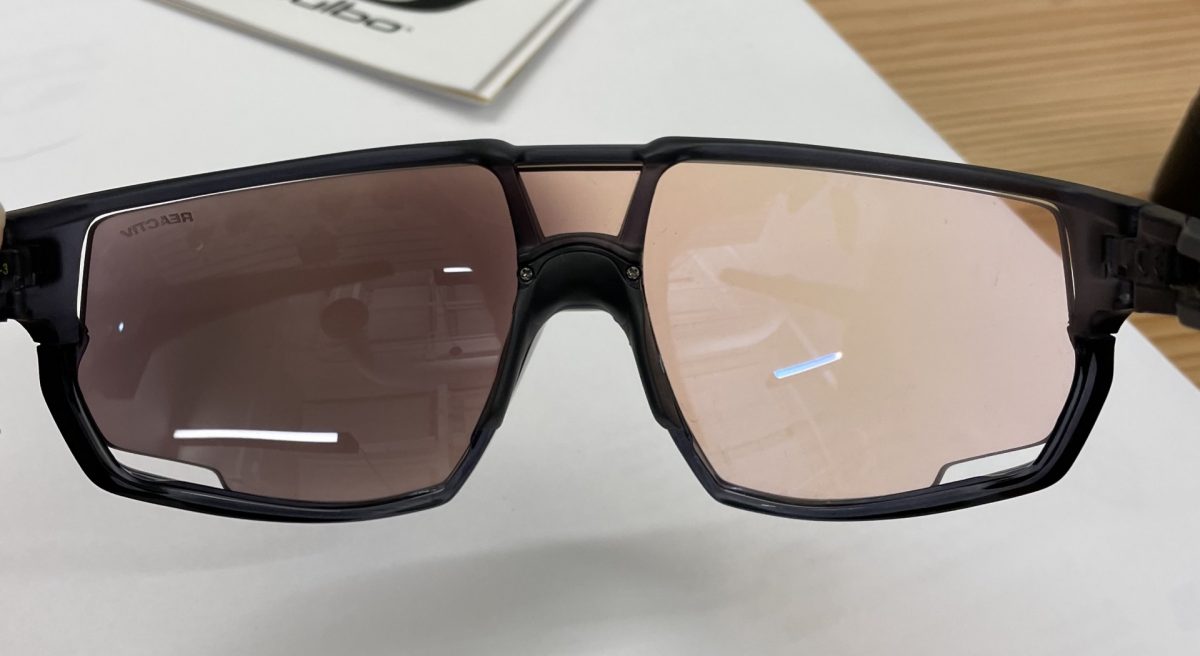
The Reactiv 1-3 High Contrast lens: left lens fixed in full sun , with the right lens fixed in a dark scenario. Photo: Julbo.
The truth is that I’ve had a single instance where I was caught out with the Reactiv 1-3 High Contrast lens. My friend Barry and I did a sunset lap at a local skin-to-ski spot. In fading light, we pivoted at the top and descended. It’s a relatively short run, maybe two minutes, to a more dense, old-growth section of forest. The lenses were too dark in the forest. Besides that, I’ve had no issues with the fade rate. In this case, I understood I’d be cutting it close and didn’t get burned, but I learned a lesson.
I’m finding so far that if I’m spending the day in the alpine and then easing back to lower and more forested terrain as the sun wanes, I’m not having issues with the fade rate or seeing through the lenses as the sky darkens. I suppose the rule I’ll have is I’m only bringing the Montebianco 2s if I know I’ll be returning before sunset, or the zone I’ll be traveling in when it’s low light/dark is reached gradually, rather than the example given above, when it was a too-quick transition from the open slope to a forest.
From time to time, as it gets dark around town, I do test how well I can see compared to clear lenses. Beyond the slight (so so slight) amber tint, the lenses work great in low light and provide good visibility — perhaps just a notch off relative to my clear lens glasses.
I’m here mostly to discuss the Reactiv lenses. But the frames are to my liking. The Montebianco 2 isn’t a super flashy in-your-face mega-frame pair of shades. Good on you if you like those, though. The Montebianco 2s are suitable to wear as glacier glasses in some places, as they feature removable plastic side panels to help reduce glare and ambient light from entering from the side. If you plan on spending time in the high mountains in late spring and summer and aren’t worried about wearing the sunglasses in low-light scenarios, you have two options through Julbo for Reactiv lenses that transition from 2-4. For someone like myself, seeking to wear the same glasses from sunrise to sunset, I’ve scored with the Reactiv 1-3 High Contrast lens.
Julbo has a prescription specific site linked here. You can work through the settings to determine the costs for the frame+lens+prescription needs. The base price starts at $350.00 and can bump up to $600.00. Of course, if you want to go the non-prescription route, you can do that too. It looks like a basic (non-Reactiv) lens and frame costs ~$100.00.
Shop for the Julbo Montebianco 2.
Jason Albert comes to WildSnow from Bend, Oregon. After growing up on the East Coast, he migrated from Montana to Colorado and settled in Oregon. Simple pleasures are quiet and long days touring. His gray hair might stem from his first Grand Traverse in 2000 when rented leather boots and 210cm skis were not the speed weapons he had hoped for. Jason survived the transition from free-heel kool-aid drinker to faster and lighter (think AT), and safer, are better.

